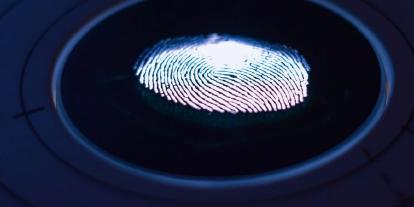Protect your devices from malware. Learn how.
What is malware?
Malware, or malicious software, is software created to disrupt or damage devices or networks, steal or leak sensitive, private data, or gain unauthorized access.
10 years ago, there were 28 million newly-developed malware applications detected globally. Last year, this number reached an alarming 677 million. That is a 24 times increase.
The effect of the crime on the end-user can be both mild and devastating. It depends on the type of malware and the goal of the cybercriminal.
What are the types of malware?
There are multiple types of malware existing in the market. The most typical ones that internet users should be aware of include:
-
Virus. The most common type of malware is designed to disrupt the system’s operations. Usually, viruses are downloaded with a document or file. Once opened, the virus spreads and harms programs, files, or networks.
-
Ransomware. It infects the user’s system, encrypts files, or blocks access. Hackers then request a ransom payment to decrypt the files and restore access.
-
Trojan horse. As the name suggests, the Trojan horse is designed to look like a legitimate software or program. Once opened, the virus can gain access to data, modify, block or delete it.
-
Worms. Designed to self-replicate, this type of malicious software quickly spreads to devices within the network. The device can get infected by downloading a file or connecting to a suspicious network.
-
Adware. Malicious software designed by developers to generate revenue by showing dozens of advertisements on your screen. Apart from being annoying, adware might also be dangerous. It might redirect you to malicious websites that contain viruses.
-
Spyware. Software designed to observe and collect data about the user without him knowing about it. Spyware is commonly used to collect sensitive personal details or financial data.
-
Keylogger. The cybercriminal can obtain sensitive information such as bank login credentials by monitoring and recording keystrokes.
How can you get infected with malware ?
This malicious software spreads through physical and virtual means. For example, a user can get infected with malware by inserting a USB drive into his device without scanning it first.
Also, social engineering attacks (especially phishing attacks via email) are a common way to spread them. The legitimately looking emails contain a link or an attached file infected with malware.
Specifically, exe and doc files were the two most frequent malware file types globally. Exe files were most prevalent on the web, and doc files were more commonly received by email.
Of course, there are multiple other ways that malware spreads: through malicious networks, messaging apps, malicious software installations, etc.

How to know that a device is infected?
The most typical warning signs that the device was compromised with malware infection include:
- Slower than usual computer performance;
- Frequent pop-up ads;
- Programs opening and closing automatically;
- Redirects to the sites you did not intend to visit;
- Lack of storage space;
- Infection warnings;
- Blue screen of death (BSOD) or other problems with starting or shutting down the device.
How to remove malicious software?
If you recognize that your device has been infected with malware (or at least suspect so), make sure to respond as quickly as possible. Here is what you can immediately do:
- Use antimalware software.
Antimalware software is usually designed not only to detect and prevent malware but also to remove it. Make sure to check your current tool for this option.
- Use operation system-provided tools.
Usually, some antivirus or antimalware software is already pre-installed on computers. For instance, Windows 10 offers malware removal guidelines.
There are also some concrete guidelines for removing Mac Defender malware on Mac computers too. They might be helpful for removing other unwanted software.
How to prevent malware?
The best strategy for removing malware, of course, is preventing it from infecting the device in the first place. Here are the top prevention strategies that can help you protect against malware:
-
Always use reliable antivirus or antimalware software. Make sure to update your operating system, programs, and applications as soon as a new update is released.
-
Never click on a link that you are not sure of (even if you receive it from a friend). Never download a file or a program if you are not fully aware of what is inside.
-
Only purchase software and applications from official websites. Never trust too-good software offers found on unknown websites.
-
Use a password manager to protect yourself from disclosing your credentials in a keylogger attack.
-
Turn on Two-factor authentication on the most significant, sensitive accounts.
-
If possible, avoid connecting to unknown, free, public wi-fi networks. Never visit a bank account while connected to a public network.
-
Be skeptical about everything you see online. It is better to check the credibility of a website/software/app/program twice than to get infected with malware.
Stay safe!





